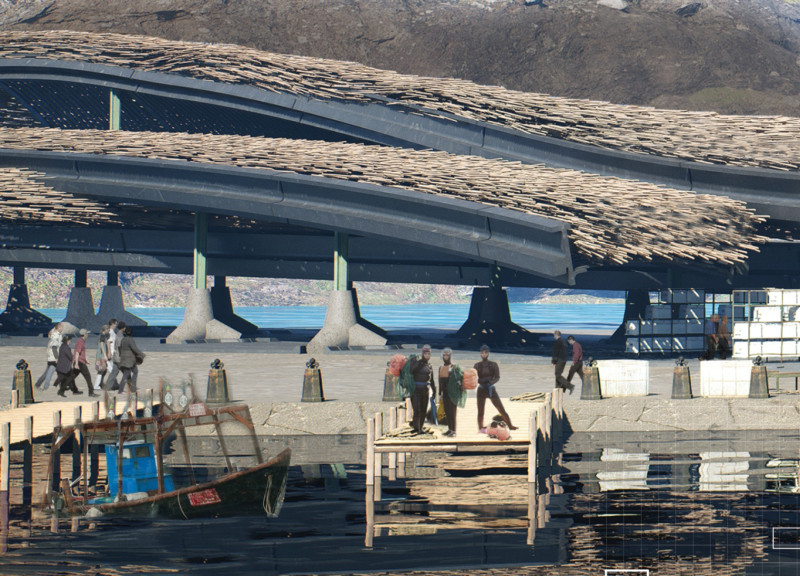5 key facts about this project
At first glance, the building conveys a sense of modernity that respects the cultural heritage of its location. The design is characterized by clean lines and a cohesive form that integrates seamlessly with the surrounding environment. By using a combination of local materials and contemporary construction techniques, the project reflects a commitment to sustainability while embracing the architectural language of its setting.
Functionally, the project is designed to accommodate a diverse range of activities, fostering interaction and collaboration among its occupants. The layout prioritizes accessibility, with well-defined circulation paths that guide users through various spaces. The inclusion of flexible areas allows for multifunctional use, catering to both private and communal needs. This thoughtful organization enhances user experience, ensuring that each element serves a purpose while contributing to the overall flow of the building.
The architectural details of the project further illustrate the designer's meticulous attention to craftsmanship. Large windows invite natural light, creating bright and inviting indoor environments that promote well-being and productivity. The façade is crafted with a blend of materials, including concrete, wood, glass, and steel, each chosen for its durability and aesthetic qualities. These materials work in concert to create visual interest while providing structural integrity.
Unique design approaches are evident throughout the project, particularly in the integration of green elements. The incorporation of living walls and rooftop gardens serves not only to reduce the building's environmental impact but also to promote biodiversity in urban settings. These features enhance the aesthetic appeal of the design while contributing to overall energy efficiency through natural insulation and cooling.
The project also emphasizes the importance of communal spaces, where residents and visitors can gather, interact, and engage in leisure activities. These areas are thoughtfully designed to create a sense of community, encouraging social interaction through strategically placed seating and landscaping that invites pause and conversation.
With careful attention to the local climate, the building takes advantage of passive design strategies that optimize natural ventilation and sunlight, reducing reliance on mechanical systems. This approach not only minimizes operational costs but also aligns with modern architectural trends focused on ecological responsibility.
As you explore the project presentation, you will find detailed architectural plans that illustrate the layout and functionality of spaces, architectural sections that provide insights into the building's structural elements, and various architectural designs that showcase different perspectives of this unique project. The overall design serves as a testament to the potential of contemporary architecture to create spaces that are not only livable but also enriching to the community. Engage with these architectural ideas to gain a deeper understanding of the design’s intentions and innovative solutions.























